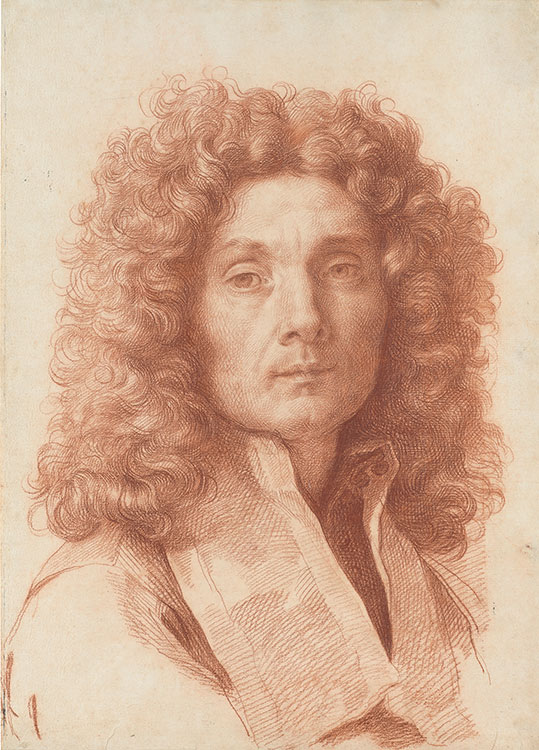
In this large and commanding self-portrait, Maratti, one of the leading protagonists of the Roman Baroque, represents himself at about the age of sixty, when he was at the height of his artistic influence. In a virtuosic display, the artist elaborated his features and the fall of light with a meticulous network of cross-hatching using a sharp piece of red chalk. The drawing was not made in preparation for a painting but is instead an autonomous work of art, serving as both a record of Maratti’s likeness and a potent demonstration of his artistic abilities.
Carlo Maratti
Italian, 1625–1713
Self-Portrait, ca. 1680–85
Red chalk (in two shades)
Kupferstich-Kabinett, Staatliche Kunstsammlungen Dresden, INV. NO. C 243
© Kupferstich-Kabinett, Staatliche Kunstsammlungen Dresden
Photo: Herbert Boswank
John Marciari, Charles W. Engelhard Curator and Department Head
Carlo Maratti was from the late seventeenth century until his death in 1713 one of the leading artists in Rome, the heir to a classicizing tradition that began with Raphael and extended through the work of Annibale Carracci. He received the most traditional of Italian artistic educations, being made to master draftsmanship before turning to painting, and to engage in extensive life drawing as well as copying classical sculpture and paintings of the great masters. Hundreds of surviving drawings by him demonstrate that draftsmanship remained essential to his art throughout his career… and his remarkable abilities as a draftsman can be seen in this sheet. It is one of series of self-portrait drawings that Maratti made in the early 1680s, when he was at the height of his powers and was the head of the largest, most important painting workshop in Rome.
Maratti’s painted portraits are often somewhat idealized, and they often include elaborate draperies and props that indicate the sitter’s occupation or status, but his portrait drawings – especially the self-portraits – instead reflect his ability to observe and capture appearances and personalities. Especially in a large sheet like this, we marvel at Maratti’s vitality and presence, emphasized by his gaze directly out at the viewer, even as we also appreciate his remarkable facility to evoke the textures of flesh, hair, and fabric in his preferred medium of red chalk.
